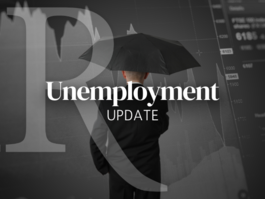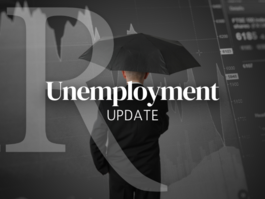Supply-Side Obama? Trust but Verify
A Commentary By Lawrence Kudlow
The past is not always a prologue to the future. But looking at some of the big winners and losers of 2010 does provide some strong hints of a positive 2011.
The biggest winner last year was the tea party, which shellacked President Obama in the election. Obama becomes the biggest loser. And the economy and stock market will be the beneficiaries.
The elections were the first major step toward restoring free-market capitalism and rolling back big-government controls, planning and spending. This is a money-politics issue. Stocks roared 20 percent during the second half of last year, as markets sniffed out the huge political change. Post-election, stocks also had a big move, finishing the year at better than two-year highs -- going all the way back to pre-Lehman Brothers.
Sure, there were important economic factors involved. Europe didn't fall apart. The dollar didn't collapse. And better U.S. economic numbers started coming in. (Double-dip bears also were big losers last year.) But rising political confidence helped, too.
The emergence of tea party free-market populism -- what I call Reaganomics 2.0 -- is hugely bullish for stocks and the economy in 2011. Recall that in mid-December the Bush tax rates were extended and the earmarked omnibus-spending monstrosity was withdrawn. These were bullish events for producers and investors that may have pulled the curtain down on Obamanomics.
And now it's fascinating to watch the money-politics dynamic continue. On a recent Sunday talk show, top Obama economic advisor Austan Goolsbee sounded like a Ronald Reagan disciple. "You've got direct incentives for companies to invest in the country," he said. And he went on to describe a new Obama economic model that sounds suspiciously supply-side: "The focus has got to be on investment, on exports and on innovation. ... The president is firmly in that -- planted in that camp -- and we are going to grow our way out of this." (Hat tip to economist Don Luskin.)
As noted, Obama agreed to freezing top marginal tax rates on all personal incomes and on capital-gains and dividend investment. But now there's major talk that the Obama budget will include a sizable corporate tax cut in return for ending unnecessary loopholes and deductions. Business has been clamoring for this. Hopefully it will include a territorial tax provision to end the double tax on foreign earnings. Equally important, the100 percent business-expensing provision of the recent tax compromise might be made permanent.
Reagan couldn't have said it any better. Surging business investment from a lower tax cost of capital and higher investment returns is a surefire job creator.
Of course, as the Gipper also would say, trust but verify: We'll have to see the fine print of any such Obama proposal. Crucially, corporate tax reform must be revenue neutral, not a tax hike. But at this moment, I am willing to trust the U-turn of Team Obama toward an incentive model of growth.
And there are plenty of stories coming out of Washington about Obama reading Reagan biographies, which presumably include the pro-growth tax reform of 1986 and surely mention that Reagan himself was a student of the John Kennedy tax reforms that slashed tax rates across-the-board.
The point is, if Team Obama is moving toward an entrepreneurial incentive model of growth, and away from the false consumption model of big-government spending, it's very good news. Already we have seen a new free-trade initiative. And there's even talk of broad-based personal-income tax-rate flattening that could be part of a big-bang tax-reform package.
And the congressional momentum is decidedly toward lower spending. Without question there's going to be a huge budget-cutting exercise led by Paul Ryan in the House and Jeff Sessions in the Senate. Sen. Jim DeMint wants a showdown over the debt ceiling in order to force some kind of balanced-budget amendment. And Sen. Bob Corker has taken the bit in order to build a bipartisan group to make sure that Republicans get a spending cap in exchange for raising the debt ceiling.
Keynesians do not understand the pro-growth benefits of lower government spending. But anytime government resource absorption is reduced, potential investment for the private sector is unleashed.
Yes, once again, we must trust but verify. And there are going to be huge battles ahead over Obamacare and EPA regulation, both of which are anti-growth. But for starters in the new year, carrying over from the November elections, at least fiscal policy appears to be moving in a positive pro-growth direction.
No wonder stocks rallied almost 100 points in the first 2011 trading day. The Gipper must be smiling about all this.
COPYRIGHT 2010 CREATORS SYNDICATE INC.
See More Commentary by Lawrence Kudlow
See Other Political Commentary
Views expressed in this column are those of the author, not those of Rasmussen Reports.
Rasmussen Reports is a media company specializing in the collection, publication and distribution of public opinion information.
We conduct public opinion polls on a variety of topics to inform our audience on events in the news and other topics of interest. To ensure editorial control and independence, we pay for the polls ourselves and generate revenue through the sale of subscriptions, sponsorships, and advertising. Nightly polling on politics, business and lifestyle topics provides the content to update the Rasmussen Reports web site many times each day. If it's in the news, it's in our polls. Additionally, the data drives a daily update newsletter and various media outlets across the country.
Some information, including the Rasmussen Reports daily Presidential Tracking Poll and commentaries are available for free to the general public. Subscriptions are available for $4.95 a month or 34.95 a year that provide subscribers with exclusive access to more than 20 stories per week on upcoming elections, consumer confidence, and issues that affect us all. For those who are really into the numbers, Platinum Members can review demographic crosstabs and a full history of our data.
To learn more about our methodology, click here.



